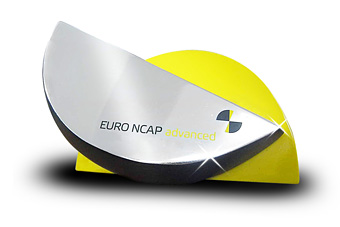NEWS RELEASES
Products and Technology
Mazda's Rear Vehicle Monitoring System to Receive Euro NCAP Advanced Award
|
HIROSHIMA, Japan—Mazda Motor Corporation has announced that its Rear Vehicle Monitoring system (RVM), which is available in the European Mazda3 (known as the Mazda Axela in Japan), will receive a Euro NCAP* Advanced award at the Frankfurt Motor Show in September 2011.
Established in 2010, the Euro NCAP Advanced award recognizes new safety technologies that are proactively developed and introduced by automobile manufacturers. This year, the award acknowledges Mazda's RVM as one of the most outstanding new safety technologies.
Mazda's RVM alerts drivers to the possibility of a collision when changing lanes on the highway. At speeds over 60km/h, radar sensors mounted in the left and right sides of the rear bumper detect vehicles approaching from behind in the adjacent lanes. When a vehicle moves into the detection zone, the system alerts the driver with an indicator light that is built into the door mirror on each side. If a vehicle is in the detection zone and the driver activates the turn signal to move into the same lane, the indicator light will blink and a warning beeper will sound. The RVM system is effective even in bad weather conditions and is designed to detect all types of vehicles, including motorcycles.
Mazda was the first Japanese carmaker to introduce a rear vehicle monitoring system to Europe with the Mazda6 RVM in 2008. It was then made available with the European Mazda3 and the CX-7 in 2009, and will be included in the new Mazda CX-5 compact crossover SUV premiering at the Frankfurt Motor Show in September together with the facelifted Mazda3.
Mazda considers improving safety performance to be one of the fundamental principles of automobile manufacturing, and is engaged in the development of various safety technologies and systems. Mazda aims to deliver driving pleasure as well as outstanding environmental and safety performance to every customer. To ensure this, Mazda is accelerating its research and development programs to achieve safety levels that are even higher than global safety standards.
|


